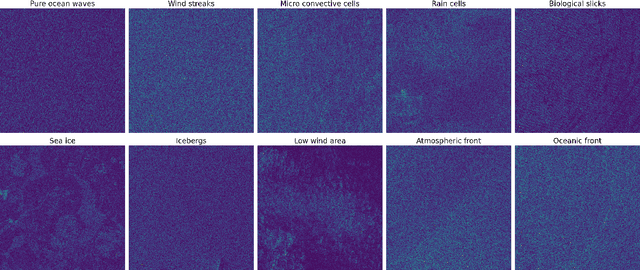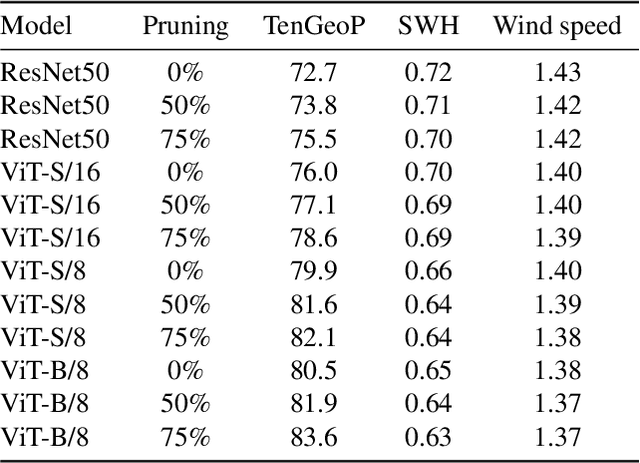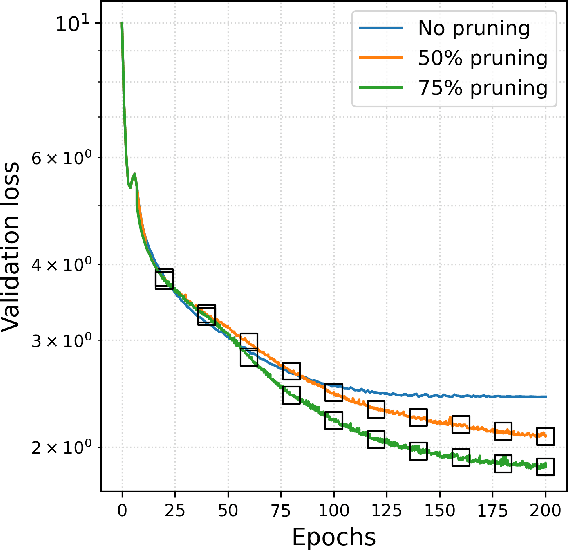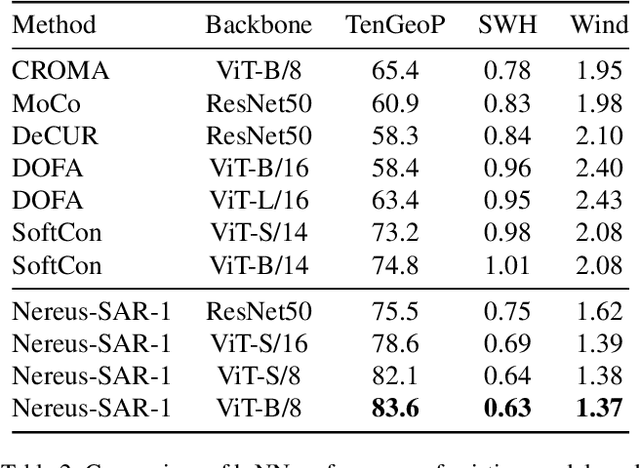Alexandre Tuel
Efficient Self-Supervised Learning for Earth Observation via Dynamic Dataset Curation
Apr 09, 2025



Abstract:Self-supervised learning (SSL) has enabled the development of vision foundation models for Earth Observation (EO), demonstrating strong transferability across diverse remote sensing tasks. While prior work has focused on network architectures and training strategies, the role of dataset curation, especially in balancing and diversifying pre-training datasets, remains underexplored. In EO, this challenge is amplified by the redundancy and heavy-tailed distributions common in satellite imagery, which can lead to biased representations and inefficient training. In this work, we propose a dynamic dataset pruning strategy designed to improve SSL pre-training by maximizing dataset diversity and balance. Our method iteratively refines the training set without requiring a pre-existing feature extractor, making it well-suited for domains where curated datasets are limited or unavailable. We demonstrate our approach on the Sentinel-1 Wave Mode (WV) Synthetic Aperture Radar (SAR) archive, a challenging dataset dominated by ocean observations. We train models from scratch on the entire Sentinel-1 WV archive spanning 10 years. Across three downstream tasks, our results show that dynamic pruning improves both computational efficiency and representation quality, leading to stronger transferability. We also release the weights of Nereus-SAR-1, the first model in the Nereus family, a series of foundation models for ocean observation and analysis using SAR imagery, at github.com/galeio-research/nereus-sar-models/.
Diffusion Models for Interferometric Satellite Aperture Radar
Aug 31, 2023Abstract:Probabilistic Diffusion Models (PDMs) have recently emerged as a very promising class of generative models, achieving high performance in natural image generation. However, their performance relative to non-natural images, like radar-based satellite data, remains largely unknown. Generating large amounts of synthetic (and especially labelled) satellite data is crucial to implement deep-learning approaches for the processing and analysis of (interferometric) satellite aperture radar data. Here, we leverage PDMs to generate several radar-based satellite image datasets. We show that PDMs succeed in generating images with complex and realistic structures, but that sampling time remains an issue. Indeed, accelerated sampling strategies, which work well on simple image datasets like MNIST, fail on our radar datasets. We provide a simple and versatile open-source https://github.com/thomaskerdreux/PDM_SAR_InSAR_generation to train, sample and evaluate PDMs using any dataset on a single GPU.
Autonomous Detection of Methane Emissions in Multispectral Satellite Data Using Deep Learning
Aug 21, 2023



Abstract:Methane is one of the most potent greenhouse gases, and its short atmospheric half-life makes it a prime target to rapidly curb global warming. However, current methane emission monitoring techniques primarily rely on approximate emission factors or self-reporting, which have been shown to often dramatically underestimate emissions. Although initially designed to monitor surface properties, satellite multispectral data has recently emerged as a powerful method to analyze atmospheric content. However, the spectral resolution of multispectral instruments is poor, and methane measurements are typically very noisy. Methane data products are also sensitive to absorption by the surface and other atmospheric gases (water vapor in particular) and therefore provide noisy maps of potential methane plumes, that typically require extensive human analysis. Here, we show that the image recognition capabilities of deep learning methods can be leveraged to automatize the detection of methane leaks in Sentinel-2 satellite multispectral data, with dramatically reduced false positive rates compared with state-of-the-art multispectral methane data products, and without the need for a priori knowledge of potential leak sites. Our proposed approach paves the way for the automated, high-definition and high-frequency monitoring of point-source methane emissions across the world.
 Add to Chrome
Add to Chrome Add to Firefox
Add to Firefox Add to Edge
Add to Edge